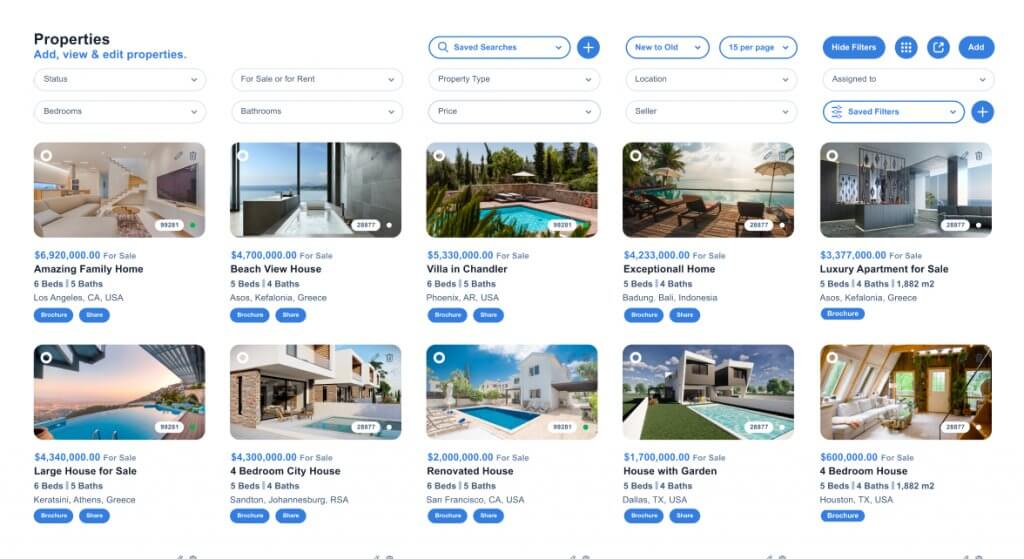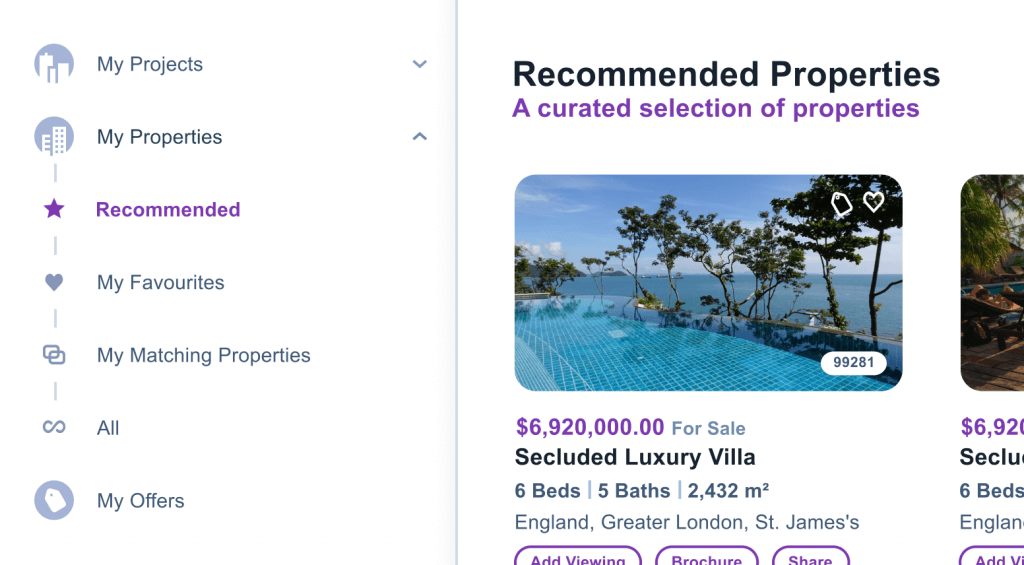In the realm of real estate website technology, the integration of a robust real estate tech stack is paramount. These sophisticated systems and tools work harmoniously to create high-performing websites that stand out in the market. From advanced CRM systems to cutting-edge AI features, let’s explore the technological marvels that set these real estate websites apart.
Table of Contents
- CRM Systems
- AI and Machine Learning
- IDX Integration
- Responsive Design and Mobile Optimization
- Conclusion
CRM Systems
Orchestrating Efficiency With Real Estate Website Technology
At the core of every top-tier real estate website lies a powerful Customer Relationship Management (CRM) system, an essential component of the real estate tech stack. These platforms serve as the nerve center, managing client data, tracking interactions, and automating essential tasks. Integration with a robust CRM ensures seamless lead management, efficient communication, and personalized experiences for potential buyers.
Example: Qobrix, a leading CRM system, offers real estate-specific solutions with features like lead tracking, automated follow-ups, and customizable workflows tailored to the industry’s unique needs.
AI and Machine Learning
Smart Insights, Smart Decisions
Artificial Intelligence (AI) and Machine Learning (ML) are pivotal components of the real estate tech stack. These technologies analyze vast amounts of data to provide actionable insights. Chatbots powered by AI can engage with visitors, answering queries and even scheduling property viewings. ML algorithms can predict market trends and suggest properties based on user preferences, enhancing the user experience.
Example: Zillow’s Zestimate, powered by AI algorithms, estimates property values, providing valuable insights for buyers, sellers, and investors.
IDX Integration
Showcasing Listings Seamlessly With Real Estate Tech Stack
Internet Data Exchange (IDX) integration is a cornerstone of the real estate tech stack. It allows agents and brokers to display a comprehensive database of property listings directly on their websites. This feature ensures that visitors have access to the most up-to-date and relevant listings, enhancing their overall experience.
Example: The Flexmls IDX platform offers seamless integration with real estate websites, providing agents with a vast database of listings that can be customized to match their brand.
Responsive Design and Mobile Optimization
Anytime, Anywhere Access With Real Estate Website Technology
In an era dominated by mobile devices, responsive design and mobile optimization are paramount components of the real estate tech stack. A website that adapts seamlessly to various screen sizes ensures that potential buyers can browse listings, view images, and access crucial information on the go. This inclusivity guarantees a positive user experience, regardless of the device used.
Example: Realtor.com employs a mobile-first approach, ensuring that their website offers a user-friendly experience on smartphones and tablets, allowing users to search for properties anytime, anywhere.
Conclusion
Real estate website technology, empowered by a comprehensive real estate tech stack, is nothing short of a marvel. Each component plays a crucial role in creating a seamless, user-centric experience. By embracing these technological advancements, real estate professionals can elevate their online presence, stand out in a competitive market, and provide unparalleled service to potential buyers.




